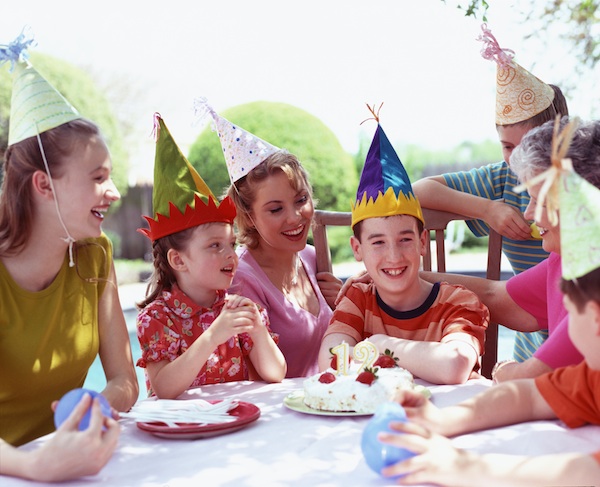
This is the way it must have begun:
Somewhere, sometime, some harried parent, probably a lone grown-up in a sea of 6-year-olds, sat among 35 opened, strewn-about birthday-party presents, searching for puzzle pieces, wayward Legos and newly naked Barbies. Wrappings and ribbons covered the floor, and small children vied for the hottest, latest items while the adult in the midst struggled in vain to figure out which gift had arrived with which child and who, exactly, would end up owning it.
“Never again,” that parent no doubt muttered beneath his or her breath. “From now on, there will be no opening presents at birthday parties.”
This is how great ideas are born. And bad ones, too.
When I grew up and parties were still held in knotty-pine-lined rec rooms and not outsourced to party professionals, opening packages was central to the birthday celebration, as basic to birthday culture as Pin the Tail on the Donkey, Musical Chairs and party favors (usually a lollipop or two, which have now, of course, morphed into full-on goody bags).
These days, the birthday scene’s become far more sophisticated, with endless options for entertainment, activities and party sites, all competing for a slice of the kid-birthday biz. Occasionally, the timing or the place or the sheer number of youngsters make opening those multiple, unwieldy gifts inconvenient and to be frank, darned difficult.
Still. The birthday-party present isn’t about the actual present. Well, maybe it is, just a little, but there’s more to it than that. Giving — and getting — gifts offers the kind of learning op you can’t get anyplace else, not from Disney movies, not from classroom lectures, not from enriching, enlightening parent-to-child talks.
In a perfect party world, your child crouches in a circle, surrounded by happy little friends, who, having just indulged in the cake-and-ice-cream segment of the event (and with any luck that tradition won’t go out of style anytime soon), eagerly await your son’s or daughter’s polite yet appropriately enthusiastic reaction to each carefully wrapped surprise.
In real life, that scenario exists mainly in “Brady Bunch” reruns, but it’s still no reason not to give it a shot. And really, so what if not every child sits quietly and pays attention or if you have to stop one or two from grabbing whatever version of Anna or Elsa your preschooler just unwrapped?
The truth is, opening presents at the birthday party is the way your child learns that it’s not about tearing through the paper just to get to the toy. It’s his chance to learn to pause, look at the guest who came with the gift, open the package and offer a convincing “thank you,” even if he already owns that particular Melissa and Doug floor puzzle or that Scrabble game or four other copies of Horton Hears a Who.
And it’s his chance, when next time he’s the guest and not the birthday boy, to learn that this day is in fact someone else’s day — and that there are times when it’s the other kid who gets the goods.
If you’re still not sold on real-time, on-site gifting, consider this: What do you like best about giving? The shopping? The planning, the ribbon trimming, the thank-you note? If you’re like most of us, it’s none of the above. It’s the look of pleasure or elation or surprise you get to see on your friend’s face when she opens the present you’ve picked out and brought with you.
Simply hauling a package into the room and plunking it down in a big present pile like some kind of birthday party admission ticket just doesn’t offer a child that kind of experience. Or, for that matter, any kind of experience. It certainly does little to teach him much about the joys of giving.
And the birthday kid? Carting all the spoils home to dismantle on the playroom floor in a celebratory party for one smacks of sheer self-indulgence. And that’s not a lesson any of us would elect to impart.
Linda Morgan is the author of Beyond Smart: Boosting Your Child’s Social, Emotional, and Academic Potential, and former on-air parenting expert for KING 5, Seattle’s NBC affiliate.



























